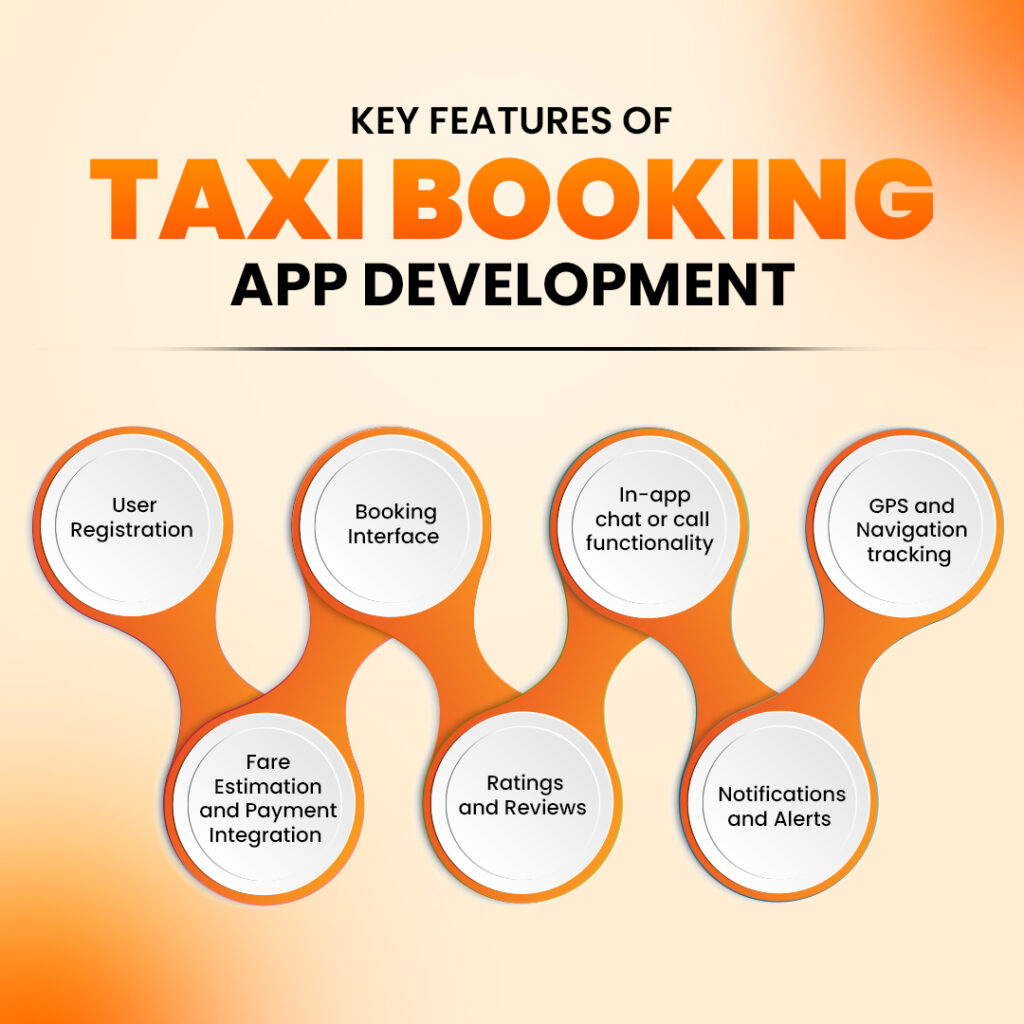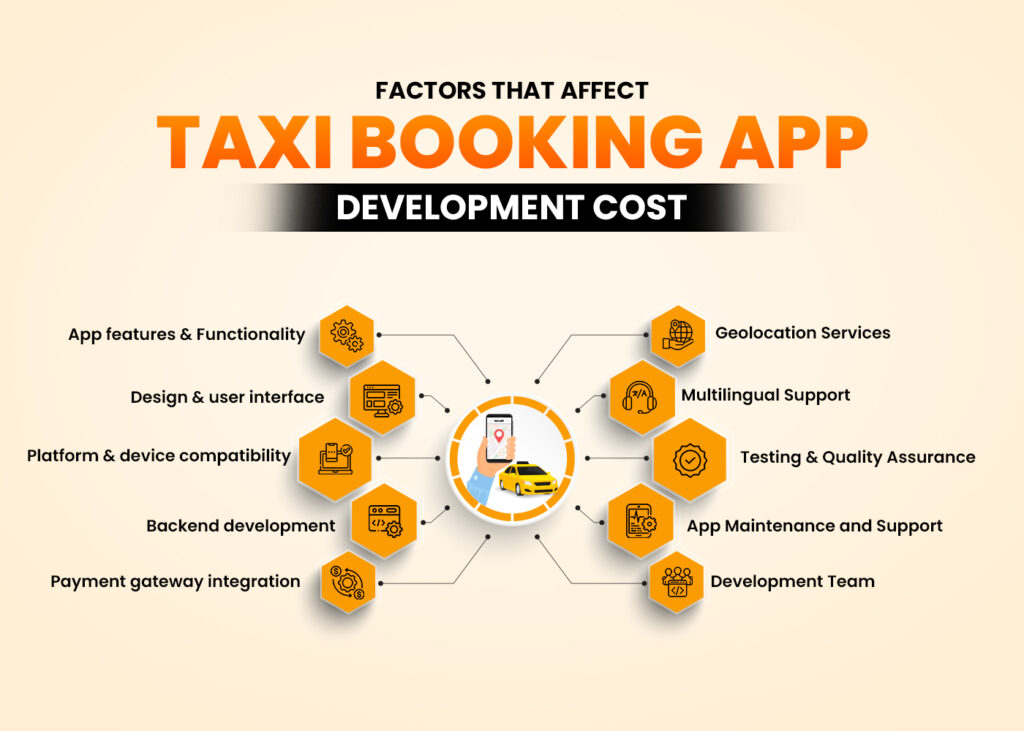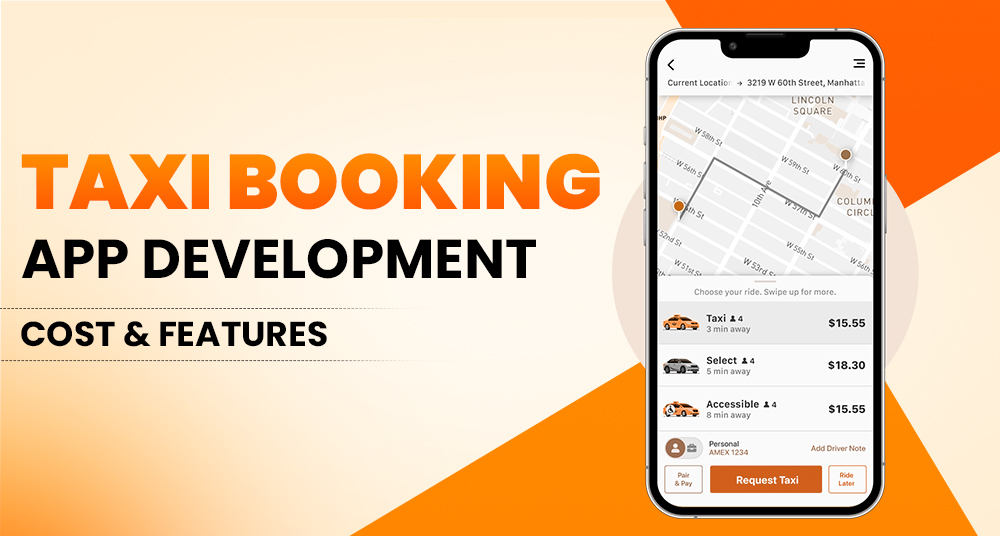Taxi booking apps have transformed the way people commute, offering convenience, reliability, and seamless user experiences. As technology continues to advance, the demand for seamless, efficient, and user-friendly taxi booking apps is high. However, understanding the cost of developing a taxi booking app requires a comprehensive analysis of various factors, including features, platforms, technologies, and development methodologies. In this guide, we’ll delve into the key considerations that impact the cost of taxi booking app development and provide insights into estimated costs based on industry trends and benchmarks.
Taxi App Development: Market Overview
According to Business of Apps, the market size of taxi booking apps is expected to be $283 billion by 2028 at a CAGR of 4.2 % from 2023 to 2028. The Number of Users Globally is expected to continuously increase between 2024 and 2028 at +12.45 percent and in total 217.6 million users.
This is the perfect time for building a Taxi Booking App. The global taxi booking app market has witnessed exponential growth in recent years, with increasing smartphone penetration, changing consumer preferences, and urbanization trends.
Key Features of Taxi Booking App Development

The features of taxi booking apps encompass a wide range of functionalities designed to meet the diverse needs of passengers, drivers, and service providers. From essential features like user registration and ride-booking to advanced functionalities such as ride-sharing, dynamic pricing, and predictive analytics, taxi booking apps offer comprehensive solutions for modern transportation needs.
User Registration
Allow users to set up and create their accounts using email, phone, or social media accounts. And enables users to set up their profiles by filling in personal details, preferred payment methods, and saved addresses for seamless bookings.
Booking Interface
An easy-to-use interface helps users book their rides with options to set pick-up and drop-off locations, select the type of vehicle, and view estimated fares. And also provides real-time availability of nearby drivers and estimated time to reach your location.
In-app chat or call functionality
In-app chat or call functionality enables real-time communication between passengers and drivers directly within the app interface. This allows users to communicate efficiently without needing to rely on external messaging or calling apps.
GPS and Navigation tracking
GPS tracking enables the app to accurately pinpoint the user’s location in real time. By using GPS technology embedded in smartphones, users can effortlessly set their pickup location with precision, eliminating the need for manual address input and tracking the location of the driver.
Fare Estimation and Payment Integration
Fare estimation provides passengers their actual cost of riding before booking. By considering factors such as distance, time, traffic conditions, and any applicable surcharges. Payment integration enables passengers to complete transactions seamlessly within the app, eliminating the need for cash or physical credit cards.
Ratings and Reviews
Ratings and reviews provide passengers with a platform to share their experiences and provide feedback on the service received. Display driver ratings and reviews to help users make informed decisions when selecting drivers for their rides.
Notifications and Alerts
Passengers receive instant notifications confirming their ride booking, including details such as driver information, vehicle type, and estimated time of arrival. This confirmation message provides assurance and confirms that their request has been received and processed.
How Much Does It Cost to Build a Taxi Booking App?
The cost of building a taxi app can vary significantly depending on various factors such as features, complexity, platforms, design, development team rates, and geographic location. The average cost to develop a taxi booking app ranges from $15,000 to $60,000. Customization and additional features may increase the overall cost accordingly.
Planning to Take Your Local Taxi Business Globally?
CTA: – Estimate Cost
Factors That Influence the Cost of Taxi Booking Apps

Building a taxi booking app involves various factors that influence its cost. Understanding these factors is crucial for estimating the project budget accurately. Here are the key elements that impact the cost of taxi booking applications:
App features and Functionality
The range of features and functionality included in the app significantly impacts its cost. Basic features include user registration, booking, GPS tracking, fare calculation, payment integration, and driver management. Additional features such as ride-sharing options, promo codes, real-time notifications, and multi-language support increase development costs.
Design and user interface
The complexity of app design, including user interface (UI) and user experience (UX), impacts the development cost. A well-designed app with intuitive navigation, visually appealing layouts, and seamless interactions enhances user engagement but requires more design effort and expertise.
Platform and device compatibility
The choice of platform (iOS, Android, or both) affects the development cost. Developing separate apps for iOS and Android platforms requires more resources and increases development costs compared to cross-platform development.
Backend development
The development of a robust backend infrastructure to handle user data, bookings, payments, driver dispatching, and communication is essential for taxi booking applications. Backend development costs depend on factors such as scalability requirements, database architecture, API integrations, and security measures.
Payment gateway integration
Integrating secure payment gateways is essential for processing transactions within the taxi booking app. Payment gateway integration requires additional development effort, testing, and ongoing maintenance, contributing to overall development costs.
Geolocation Services
GPS-based location tracking and mapping services are fundamental features of taxi booking applications. Integrating geolocation services such as Google Maps for accurate real-time navigation, route optimization, and location-based services adds to development costs.
Multilingual Support
Offering multilingual support to cater to diverse user demographics increases development costs. Translating app content, implementing language preferences, and providing localized user experiences require additional development effort and resources.
Testing and Quality Assurance
Comprehensive testing and quality assurance are essential to ensure the reliability, performance, and security of the taxi booking application. Testing activities include functional testing, usability testing, performance testing, security testing, and compatibility testing across devices and platforms.
App Maintenance and Support
Post-launch maintenance and support services, including bug fixes, feature updates, server maintenance, and customer support, are ongoing expenses associated with taxi booking app development. Budgeting for long-term maintenance and support is essential for ensuring the smooth operation of the app.
Development Team
The composition and expertise of the development team, including project managers, designers, developers, QA engineers, and DevOps specialists, influence development costs. Hiring experienced professionals, outsourcing certain tasks, or engaging with development agencies affect the overall project budget.

Technology Stack Used for Taxi App Development
Taxi Booking App development requires a robust technology stack to ensure seamless performance, real-time communication, and secure transactions.
Programming Languages
Java and Kotlin for Android app development, Swift for iOS app development, and JavaScript (for cross-platform development.
Backend Development
Node.js, Express.js, Python (with Django or Flask frameworks), and Ruby on Rails are the best choices for Backend development.
Database Management
MongoDB, MySQL, and PostgreSQL frameworks are used for Database Management.
API Integrations
API Integration for functionalities like maps (Google Maps API), payment gateways, SMS services, and Push Notifications.
Cloud Services
AWS and Google Cloud Platform are used for cloud computing services, storage, and databases, suitable for hosting backend servers and managing user data.
Security
Secure Socket Layer (SSL) or Transport Layer Security (TLS) protocols ensure data encryption and secure communication between clients and servers.
Summary
The landscape of taxi booking app development in 2024 is characterized by exponential growth, technological innovation, and evolving consumer demands. As highlighted in market statistics, the taxi booking app market is projected to reach $283 billion by 2028, driven by a steady increase in the number of users globally. Key features such as user registration, booking interface, in-app communication, GPS tracking, and more play a pivotal role in enhancing user experience and ensuring the success of taxi booking apps. The average cost to develop a taxi booking app ranges from $15,000 to $60,000.
Building a successful taxi booking app in 2024 requires careful consideration of market trends, user preferences, and technological advancements. By leveraging innovative features, robust technology stacks, and AI/ML capabilities, businesses can capitalize on the immense opportunities presented by the growing demand for convenient, reliable, and user-friendly transportation solutions in the digital age.






What do you think?
It is nice to know your opinion. Leave a comment.